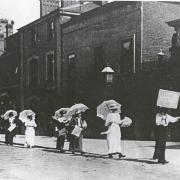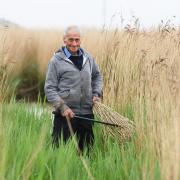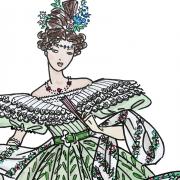The creator of the world's most famous detective loved Norfolk and the county inspired his writing, as Margaret Brecknell discovers.
Sir Arthur Conan Doyle’s best-known novel, The Hound of the Baskervilles, was first serialised in the Strand Magazine 120 years ago during the autumn of 1901. It marked the long-anticipated return of Sherlock Holmes, whom the author had famously killed off at the Reichenbach Falls in a story eight years previously.
Coming only months after a visit to Norfolk, there has long been speculation that some elements of The Hound of the Baskervilles may have been inspired by Conan Doyle’s time in the county.

In the spring of 1901, the author decided to take a short break in north Norfolk after returning unwell from South Africa, where he had served as a volunteer doctor during the Boer War. Staying in Cromer’s Royal Links Hotel (later demolished in 1949), he was accompanied on his Norfolk trip by a friend, the journalist Bertram Fletcher Robinson. Both were enthusiastic amateur golfers and were keen to play the county’s famous links courses.
During their visit Conan Doyle and Fletcher Robinson were invited to dinner at Cromer Hall. Their host, Benjamin Cabbell, is said to have entertained his guests with the tale of his Devon ancestor Richard Cabbell.
He was evidently an unsavoury character who murdered his wife upon discovering that she had been unfaithful to him and then met his own death when her faithful pet dog attacked him and tore out his throat. The ghost of the dog was said to have roamed Dartmoor ever since, haunting successive generations of Cabbell’s descendants.

This family legend bears a striking similarity to the way in which the villainous Hugo Baskerville meets his death on Dartmoor in The Hound of the Baskervilles.
Conan Doyle’s savage beast may have also been inspired by Norfolk’s own hair-raising legendary canine, Black Shuck. The author is alleged to have heard the tale of the ghostly black dog, said to be an omen of death, during a convivial afternoon with the locals in the bar of the Royal Links Hotel after bad weather ruled out his planned round of golf.
It has also been suggested that Cromer Hall may have provided some inspiration for the fictional Baskerville Hall. With its crenelated towers and heavy mullion windows, it is certainly possible to draw some interesting parallels between the real-life Norfolk country house (rebuilt in the late 1820s in the Gothic Revival style) and Conan Doyle’s fictional creation.
The author’s visit to Cromer in 1901 was by no means the only occasion on which he visited Norfolk. A keen cricketer as well as golfer, he is known to have played for the county’s St Andrews Asylum Cricket Club on several occasions during the 1890s. One of the club’s regular players, a doctor at the asylum called David George Thomson, had studied medicine with the author at Edinburgh University.

Conan Doyle evidently proved a useful addition to the side, judging by a report from the Eastern Daily Press in August 1893 which states that the club was “recently favoured with the assistance of no less a personage than Dr A Conan Doyle, the well-known contributor to The Strand Magazine. Judging by the doctor’s analysis, his bowling is almost thrilling as his stories.”
The Adventure of the Gloria Scott, which was first published around this time, is one of only two Sherlock Holmes stories to be set in Norfolk. The action takes place in the fictional village of Donnithorpe, ‘a little hamlet just to the north of Langmere, in the country of the Broads.’
Unusually, the story is narrated by Holmes himself, as the great detective recalls the circumstances of his first ever case when, as a student, he solved the mystery of the death of a university friend’s father on the family’s Norfolk estate.
Conan Doyle is believed to have come up with the idea for his other Norfolk-based story, The Adventure of the Dancing Men, during a stay in 1903 at the Hill House Hotel in the coastal village of Happisburgh. He is said to have been inspired by some stick men symbols drawn in an autograph book owned by the landlord’s young son, Gilbert Cubitt.

This story remains one of the best-known of Holmes’ cases, perhaps, because it represents one of only two occasions on which the great detective is unable to save the life of the person who seeks his help.
Unfortunately no documentary evidence exists on the part of the author to prove or disprove the theory that in writing The Hound of the Baskervilles he was inspired by his time in Norfolk in 1901. However, judging by the number of occasions on which Sir Arthur Conan Doyle visited the area, it does at least seem safe to assume that the author had a genuine affection for the county and its people.






























